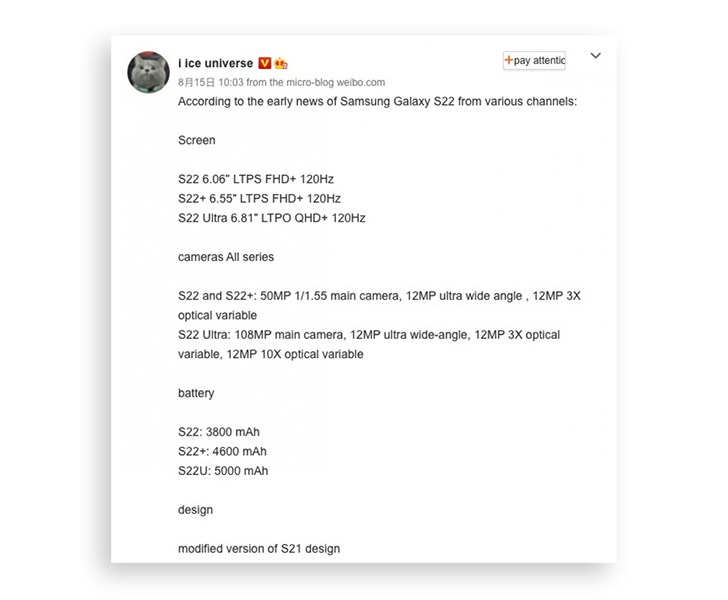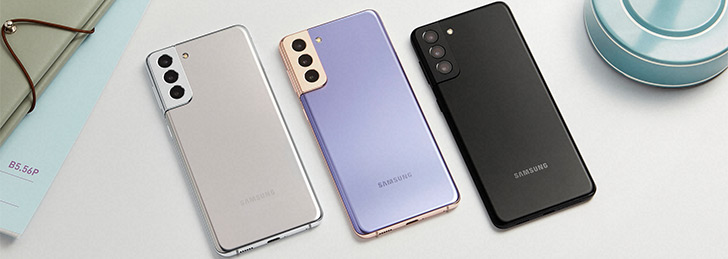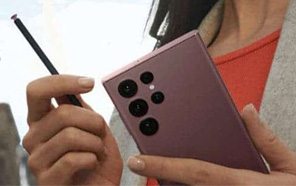The next generation of the Galaxy S-series is still months away, but Samsung is already working on it. And early leaks have given us the specs for the Galaxy S22 series. Here is everything we’ve learned.

IceUniverse, a phone leaker with a credible record for Samsung-related tips, notes that the Galaxy S22 series is also offered in three editions — the Samsung Galaxy S22, Galaxy S22+, and Galaxy S22 Ultra. The phone-maker reportedly tweaked the looks. But the new lineup sticks to the design language introduced this year.
The standard Galaxy S22 has a compact 6.06” screen that delivers a full HD resolution at a smooth 120Hz refresh rate. It’s one of the smallest Samsung flagships in recent memory, possibly meant to compete with Apple’s iPhone Mini. The S22+ has the same display specs but the panel measures 6.55” across.
Lastly, the Galaxy S22 Ultra naturally has the highest-end screen of the three. We’re looking at a 6.8” low-powered LTPO panel that supports dynamic adjustment for its 120Hz refresh rate. The resolution peaks at a crisp QHD+.

Samsung is also revisiting the camera system. IceUniverse reports that the S22 and S22+ feature a new 50MP wide camera. It's rounded off by 12MP telephoto lenses (with up to 3x lossless zooming) and 12MP ultrawide cameras. The camera cluster aboard the S22 Ultra is once again a powerhouse.
It’s made of four cameras, one 108MP wide camera, and three 12MP lenses. The trio of cameras features ultra-wide, telephoto, and periscope-telephoto lenses (capable of 10x optical zoom,) at a flagship Samsung mobile price.
Samsung has also trimmed down the battery sizes for the Galaxy S22 and S22+. The S22, owing to its smaller dimensions, packs a 3800 mAh cell, and the S22+ uses a 4600 mAh battery. The S22 Ultra inherits its 5000 mAh battery.
No fast charging details are out yet, but rumor has it that next year, the majority of the Galaxy S22 devices will use the Qualcomm Snapdragon 898 instead of the Exynos 2200. Low production yield for the Exynos chip is being cited as the reason behind this switch.

















